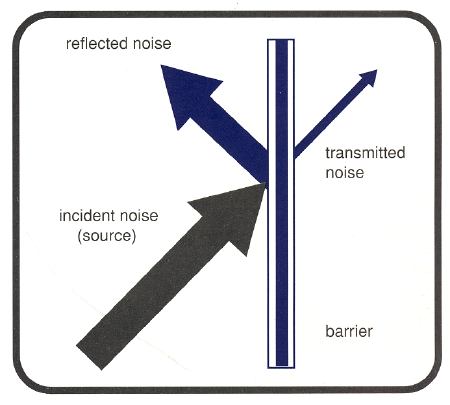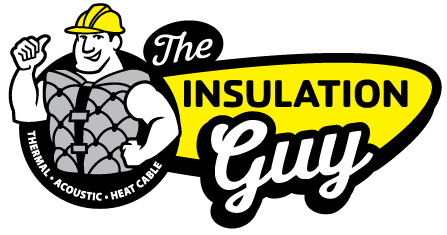How Noise Barriers Work

Use: to block transmission noise
Physical Properties: Barriers are non-porous, high density and usually non-fibrous. Barriers are generally flexible or damped. The noise is blocked, reflected and re-routed in another direction.
Barrier materials are tested and rated for their Sound Transmission Loss capability. The number is stated in dB and the higher number signifies the better barrier.
Effectiveness is expressed as STC (Sound Transmission Class).
STC is the single number rating derived from decibel loss data at several frequencies.
Sound Transmission Class of Materials
| Material | STC |
| 1 lb. density barrier material | 26 |
| 1 lb. density transparent curtain | 26 |
| 5/8" gypsum wallboard | 30 |
| 3/16" steel wall | 31 |
| 2" fiberglass curtain with 1 lb. barrier | 29 |
| 2" thick metal panel (solid and perforated) | 35 |
| 4" thick metal panel (solid and perforated) | 41 |
| 12" thick concrete | 53 |
| 3/8" plasterboard | 26 |
| 22 gauge steel | 25 |
| Solid core wood door, closed | 27 |
| Concrete block wall, unpainted | 44 |





